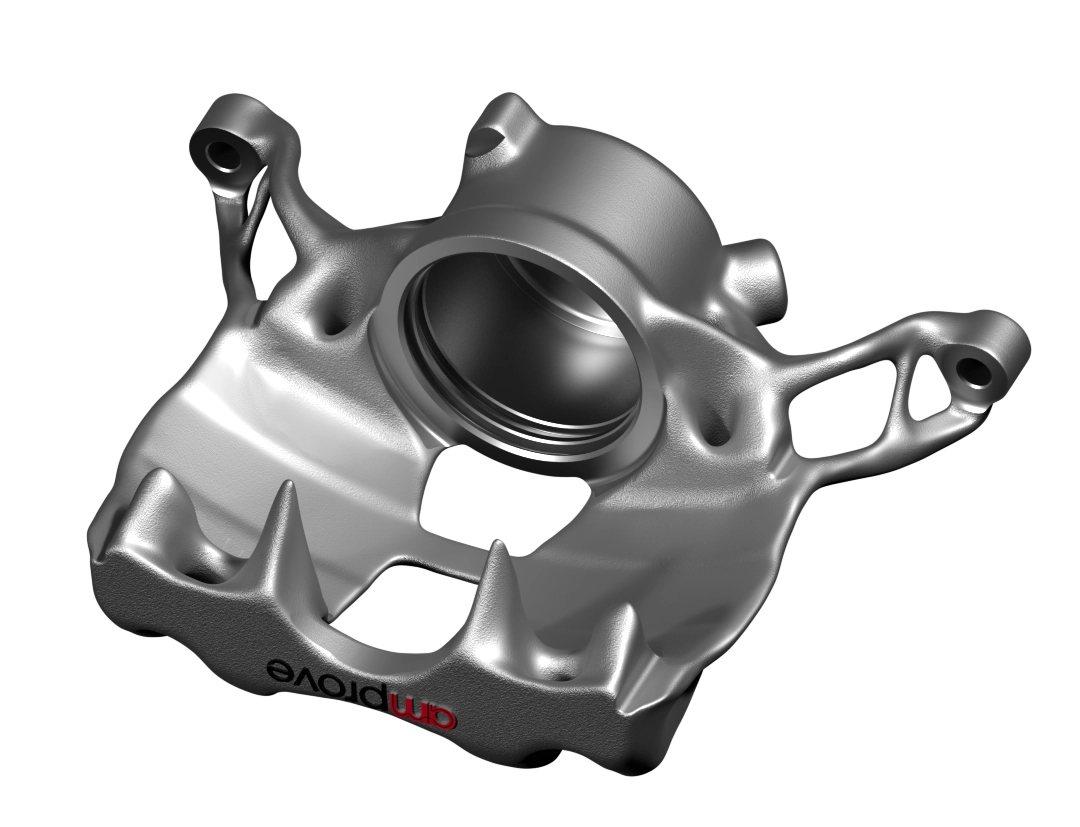Development example - Automotive
Lightweight caliper for volume models (fist caliper)

Initial component

amprove Design

Initial component

amprove Design
Development result
During the optimization of the brake caliper from the current model of a German car manufacturer, the development focused on reduced production costs through lower material usage. The result of our optimization was a brake caliper with 20% lower mass and per-unit costs reduced by 0.15€. In addition to lower energy consumption, the lighter construction also results in advantages for driving dynamics by reducing the unsprung mass. The optimization of cost-effective lightweight components can be applied to various vehicle parts in quantities ranging from a few thousand up to millions to achieve a large scope.
We would be happy to discuss possible applications for optimized components in your vehicles and to help identify other potential use cases.
&
Performance Parameter
Mass reduction
-20 % (663g)Stress reduction
-22 % (-60 MPa)Stiffness increase
+26 % (-0,37ml @ 150 bar)The most important goal besides mass reduction for this application (high-volume production) is to minimize the maximum stress. This makes it possible to use a lower-alloy, less expensive material. By doing so, the per-unit costs can be further reduced. The stress reduction is achieved by a bionic geometry that is suitable for the prescribed load path. At the same time, the new component structure increases the stiffness of the caliper by 26%, which improves how the brake pedal feels.

Manufacturing
Unit cost reduction
-$0.17Manufacturing process
Casting with permanent molds/modelsMaterial
Galvanized cast ironTool durability
Identical to initial componentTool
2 part designThe biggest challenge in the development of lightweight cast components is to ensure economic manufacturability. Mass reduction lowers material costs and thus the price of the blank. At the same time, the mold manufacturing costs must be kept low in order to enable overall cost reduction. For this brake caliper, a two-part mold design with a free-form parting line was generated. The figure illustrates the parting line between the blue and red marked areas. With our development process, we have the possibility to ensure demoldability even for the most complex components and to enable uniform solidification. During development, we also simultaneously influence the tool manufacturing costs via the component geometry, to enable a reliable and economic production.

We would be happy to discuss possible applications for your vehicles and to identify other potential components
